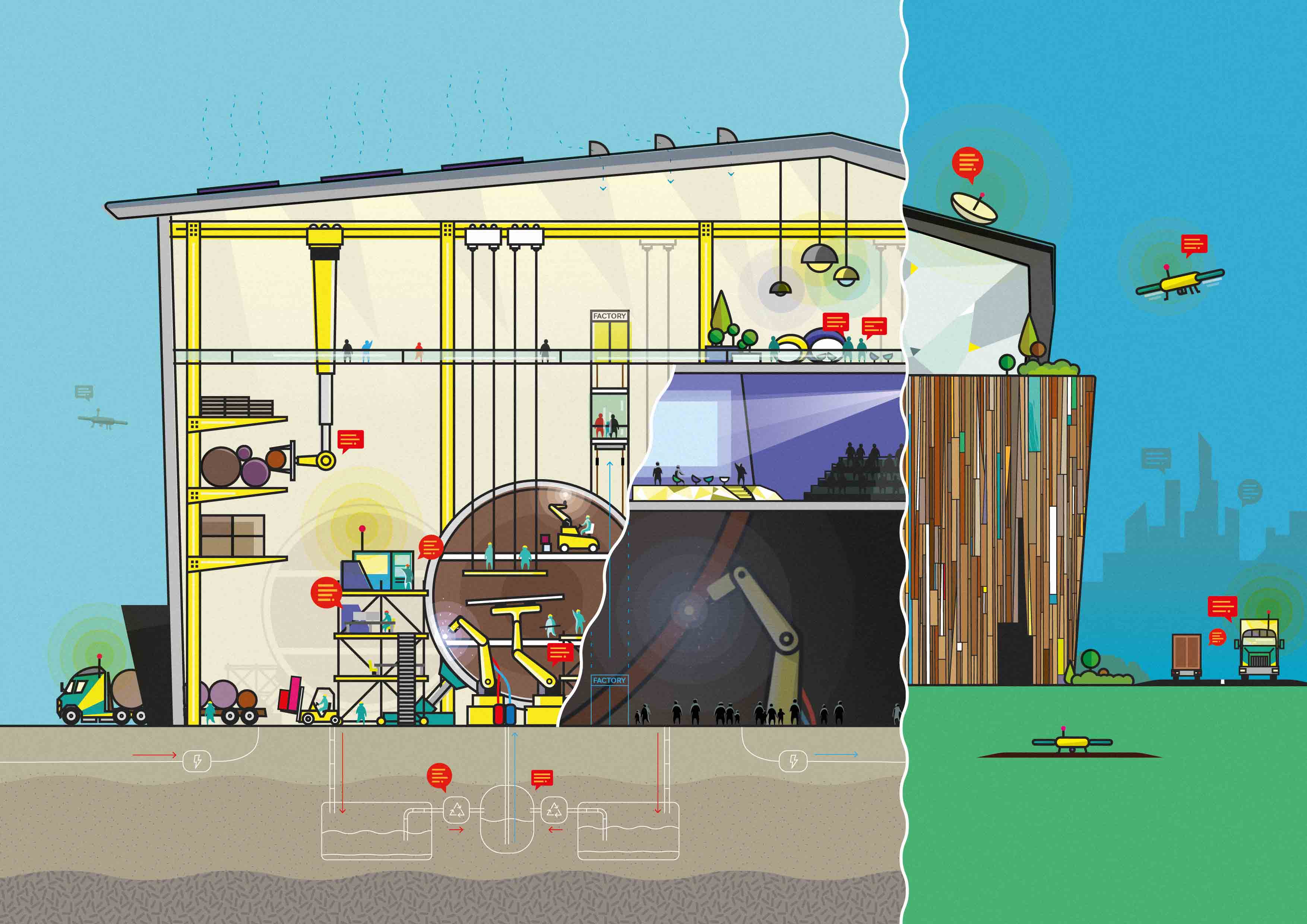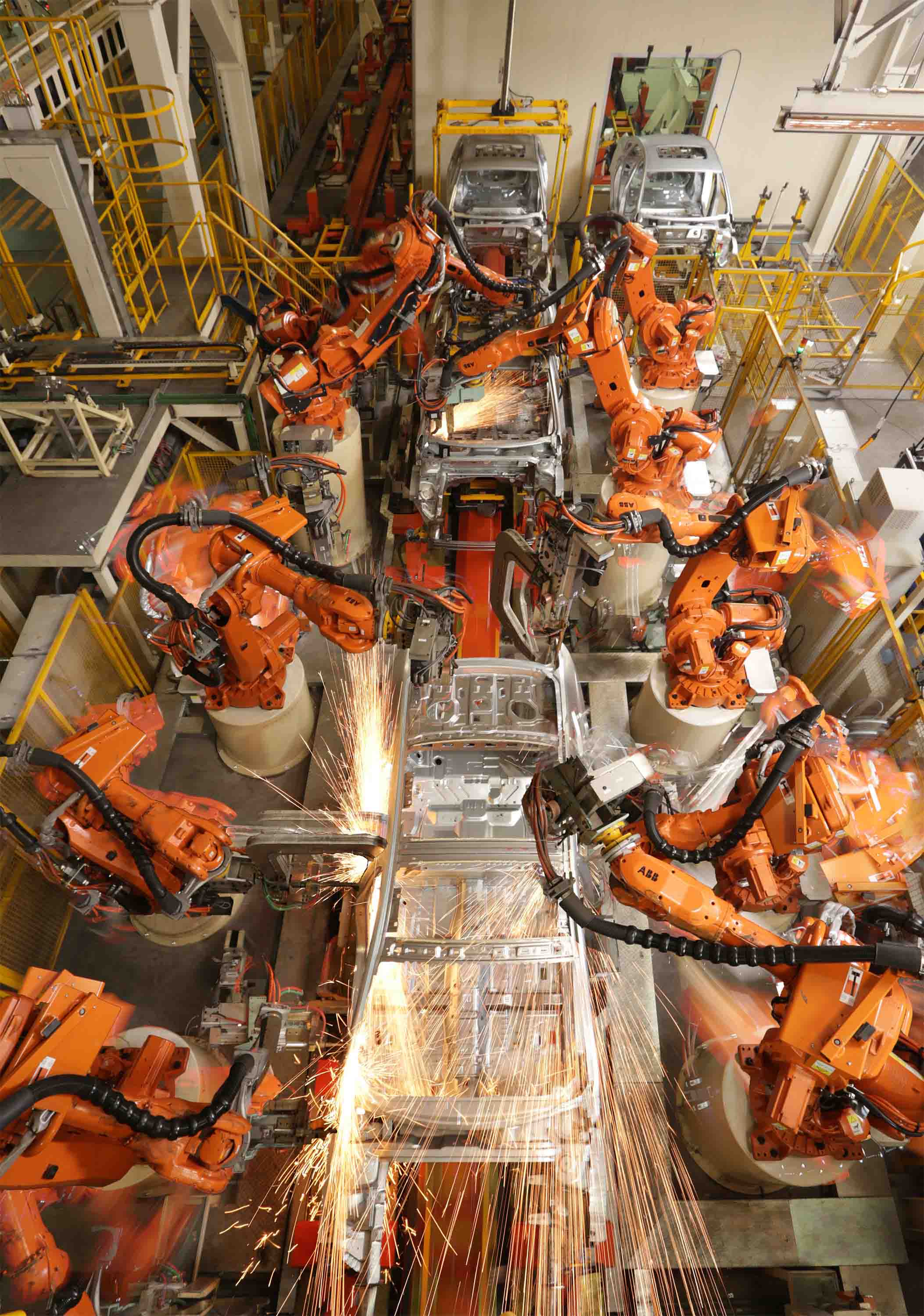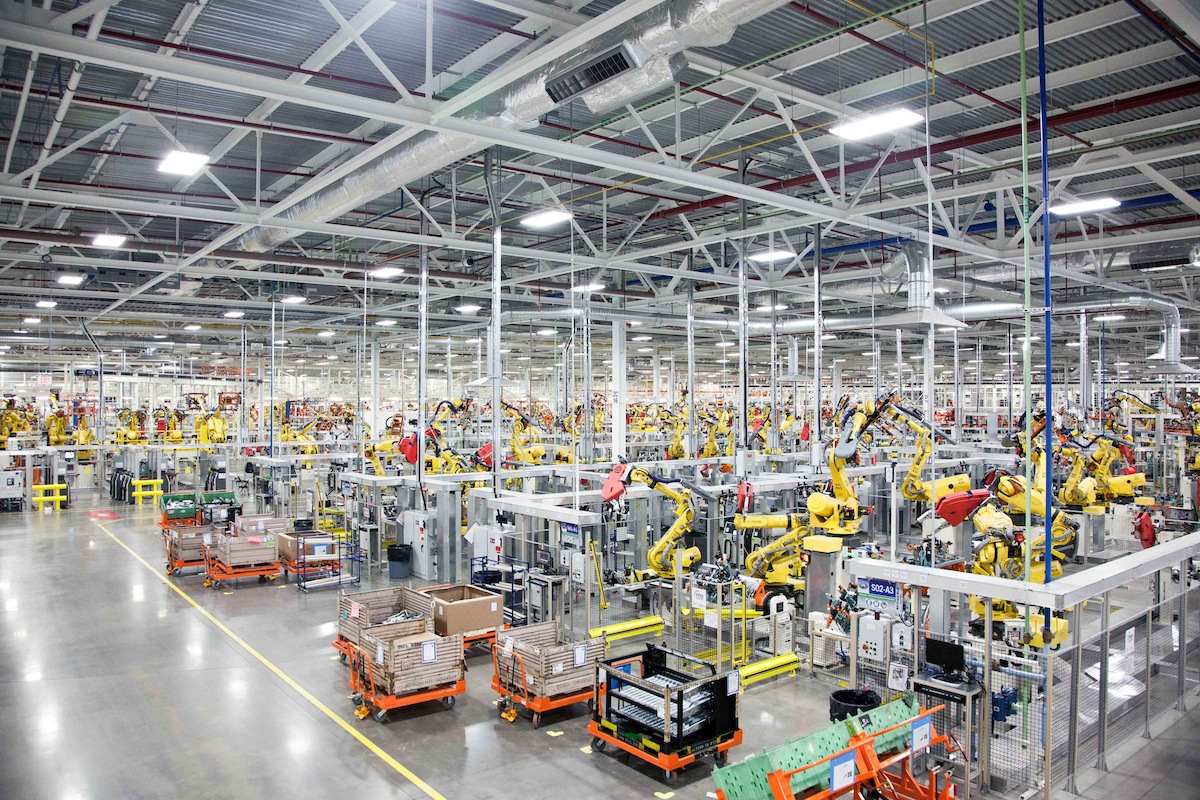Global engineering and design consultantcy Arup launched "Rethinking the Factory," a report exploring the emerging trends, processes, and technologies that are transforming the manufacturing landscape. The report examines how the introduction of new technologies such as 3D printing, self-cleaning and self-healing materials, human/robot collaboration will lead to faster, more efficient and environmentally friendly production.
While many believe robots will replace humans in the factories of the future, the report, developed by Arup’s Foresight + Research + Innovation and Science and Industry teams, suggests collaboration between the two will be key. The integration of cameras and smart sensors already allow robots to adapt to their external environments.
Increasingly intuitive, their ability to infer a full task after being shown just a portion of it will enable workers to serve as robot supervisors, operating machinery and controlling smart production processes such as program and systems management and data analysis, rather than participating in manual labor. The increasing technicality of factories will mean that employees with STEM[1] skills will be particularly sought after, further exacerbating the international shortage of highly skilled workers, set to reach 40 million by 2020.
Beyond machines, new materials have the potential to improve the production process and increase product performance. A variety of self-healing and self-cleaning materials are being developed—such as bio-inspired plastic, which replicate the strength, durability, and versatility of a natural insect cuticles—which are capable of repairing damage without human intervention. These technologies will extend the lifetime of manufactured goods and reduce demand for raw materials.

Big data, technology, and 3D printing
The utilization of 3D printing—or more accurately, additive manufacturing—will allow manufacturing to be more mobile and dispersed. Factory locations are therefore likely to become both more varied and closer to the consumer, including the emergence of nontraditional spaces such as small offices in a city center. This will allow production to take place closer to the point of use, lowering transport costs and emissions.
Intelligence based on Big Data, advanced analytics, and the Internet of Things will create new opportunities for competitive advantage. Analysis of data will reveal detailed customer insights, identify new product opportunities sooner, and get new products and designs to market faster. Additive manufacturing and digital technologies will also make this mass customisation, faster, easier and more affordable.

Resilient and Adaptive Spaces
Flexibility will be critical to tackling changing consumer demands and shifting market trends. Factories will be adaptable, with modular building techniques to enable efficient re-scaling and diversification of production across various locations. This will also allow energy, water, and material consumption to be managed more effectively in an increasingly constrained resource market, while producing an environment best suited to meet the multiple needs of its highly skilled workforce.
Using tools such as BIM in factory design, planning and management will play a critical role in allowing manufacturers to foresee and mitigate issues based on access to resources, location choices, weather risks and transportation needs.
The design of the factory will also be more focused on consumer experience, utilising the factory as a showroom. The concept of the "transparent factory" will gain increased importance as more people get involved in making products or as they expect closer insight into how products are manufactured, especially at a customised level. The opportunity for factory owners and operators lies in adapting their existing spaces to enable these types of experiences to take place.
“The convergence of the physical and digital worlds means that manufacturers have to continue to adapt and adopt new processes quicker than ever before," Duncan White, Science and Industry Leader at Arup said in a press release. "While developing sustainable and resilient practices will be essential, having access to a skilled pool of workers will prove to be equally important and challenging as these changes are made. As such, it is critical that companies and policy-makers have a comprehensive understanding of the changing manufacturing landscape."
Rethinking the Factory is part of Arup’s Future of… series that envisages the possible futures by highlighting innovations from around the world. Previous reports include the Future of Highways, Future of Rail, Cities Alive, and It’s Alive.
For further information on Rethinking the Factory please download the report.
Related Stories
| Aug 11, 2010
Gensler among eight teams named finalists in 'classroom of the future' design competition
Eight teams were recognized today as finalists of the 2009 Open Architecture Challenge: Classroom. Finalists submitted designs ranging from an outdoor classroom for children in inner-city Chicago, learning spaces for the children of salt pan workers in India, safe spaces for youth in Bogota, Colombia and a bamboo classroom in the Himalayan mountains.
| Aug 11, 2010
AECOM, WATG top BD+C's ranking of the nation's 75 largest hotel design firms
A ranking of the Top 75 Hotel Design Firms based on Building Design+Construction's 2009 Giants 300 survey. For more Giants 300 rankings, visit http://www.BDCnetwork.com/Giants
| Aug 11, 2010
Parsons Brinckerhoff, Dewberry among nation's largest multifamily design firms, according to BD+C's Giants 300 report
A ranking of the Top 75 Multifamily Design Firms based on Building Design+Construction's 2009 Giants 300 survey. For more Giants 300 rankings, visit /giants
| Aug 11, 2010
USGBC’s Greenbuild 2009 brings global ideas to local main streets
Save the planet with indigenous knowledge. Make permanent water part of your life. Dive deep water for clues to environmental success. Connect site selection to successful creative concepting. Explore the unknown with Discovery Channel’s best known guide. These are but a few of the big ideas participants can connect to at USGBC’s Greenbuild International Conference and Expo, taking place on November 11-13, 2009 in Phoenix, Ariz.
| Aug 11, 2010
Goettsch Partners wins design competition for Soochow Securities HQ in China
Goettsch Partners (GP) has been selected as the winning firm in the competition to design the Soochow Securities Headquarters, the new office and stock exchange building for Soochow Securities Co. Ltd. The 21-story, 441,300-square-foot project includes 344,400 square feet of office space, an 86,100-square-foot stock exchange, meeting rooms, classrooms, a cafeteria, and underground parking for 400 cars and 800 bicycles.
| Aug 11, 2010
RMJM unveils design details for $1B green development in Turkey
International architecture company RMJM today announced details of the $1 billion Varyap Meridian development it is designing in Istanbul’s new residential and business district, which will be one of the "greenest" projects in Turkey. The luxury 372,000-square-meter development on a site totalling 107,000 square meters will be located in the Atasehir district of Istanbul, which the Turkish government intends to transform into the country’s new financial district and business center.
| Aug 11, 2010
Urban Land Institute honors five 'outstanding' developments in Europe, Middle East, and Africa
Five outstanding developments have been selected as winners of the Urban Land Institute (ULI) 2009 Awards for Excellence: Europe, Middle East, and Africa (EMEA) competition. This year, the competition also included the announcement of two special award winners. The Awards for Excellence competition is widely regarded as the land use industry’s most prestigious recognition program.
| Aug 11, 2010
Design firms slash IT spending in 2009
Over half of architecture, engineering, and environmental consulting firms (55%) are budgeting less for information technology in 2009 than they did in 2008, according to a new report from ZweigWhite. The 2009 Information Technology Survey reports that firms' 2009 IT budgets are a median of 3.3% of net service revenue, down from 3.6% in 2008. Firms planning to decrease spending are expected to do so by a median of 20%.
| Aug 11, 2010
American Concrete Institute forms technical committee on BIM for concrete structures
The American Concrete Institute (ACI) announces the formation of a new technical committee on Building Information Modeling (BIM) of Concrete Structures.







